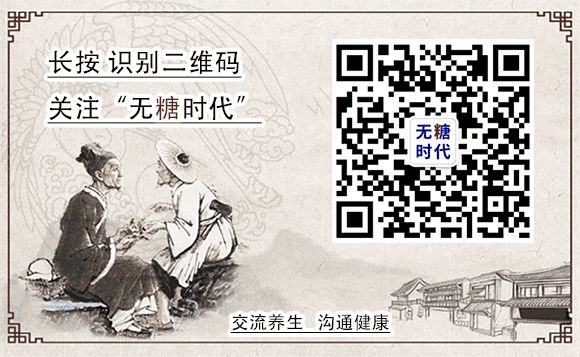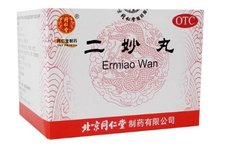It is easy to remove cold, but difficult to eliminate dampness. Dampness evil is the source of all diseases. However, dampness is hard to remove from the body. Although there are many folk methods for eliminating dampness , for patients who already have significant dampness and live or work in environments that easily generate dampness, these methods are ineffective. The best approach is to take oral TCM medicines to eliminate dampness. Below, I will introduce seven of the fastest and most effective TCM medicines for eliminating dampness.
The Fastest and Best TCM Medicines for Eliminating Dampness
1. Er Miao Wan (Two Marvels Pill)
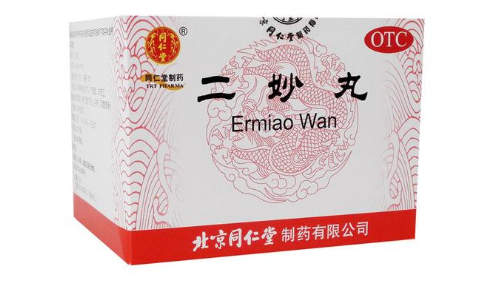
Ingredients: Stir-fried Huang Bai (Phellodendron) and Stir-fried Cang Zhu (Atractylodes) mixed in a ratio of 1:1.
Er Miao Wan is a fundamental formula in TCM used for drying dampness and clearing heat, widely applied to inflammation, redness, swelling, and exudation caused by damp-heat accumulation. It is used in various clinical departments as long as the diagnosis is damp-heat syndrome, especially when dampness is more severe than heat.
Diseases effectively treated by Er Miao Wan include:
Dermatology: Eczema, athlete’s foot, scrotal eczema, genital herpes, shingles, tinea manuum, impetigo, tinea pedis, acute and chronic eczema of the lower limbs, dermatitis, anal pruritus, senile pruritus, and rosacea.
Gynecology: Abnormal vaginal discharge (various vaginitis), acute and chronic urinary tract infections, irregular menstruation, and pelvic inflammatory disease.
Internal Medicine: Diarrhea, dysentery, enteritis, jaundice, hepatitis, gastritis and gastric ulcers (damp-heat type), insomnia with vivid dreams (damp-heat syndrome).
Surgery: Red, swollen, hot, and painful feet and knees, rheumatoid arthritis (damp-heat syndrome), lower limb varicose veins with damp-heat, lower limb ulcers, diabetic foot, lower limb erysipelas, sciatica (damp-heat syndrome), and damp-heat low back pain.
Urology: Urinary tract infections.
Oral Medicine: Halitosis, oral ulcers, gingivitis, and periodontitis.
Otorhinolaryngology: Chronic pharyngitis, chronic sinusitis, and chronic maxillary sinusitis.
Andrology: Impotence (damp-heat accumulation), orchitis or epididymitis.
Damp-heat often manifests as a constitution that is difficult to eliminate in a short time, thus requiring long-term medication. Most medicines that dry dampness and clear heat have strong properties, so caution is needed in their use. Due to the simple composition of Er Miao Wan, it has almost no toxic side effects and is very safe for long-term use. Therefore, it is the first choice for drying dampness and clearing heat.
2. Xiang Sha Yang Wei Wan (Aromatic Sand Stomach Nourishing Pill)
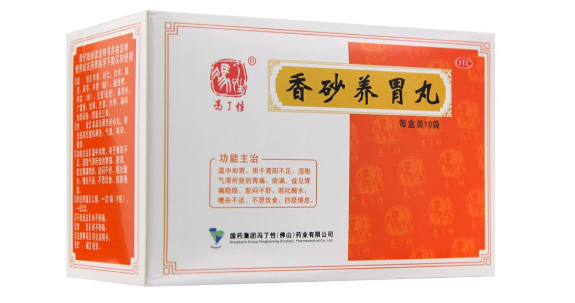
Ingredients: Sand Ginger, Chen Pi (Dried Tangerine Peel), Ban Xia (Pinellia), Zhi Shi (Bitter Orange), Jiang Hou Po (Ginger Magnolia Bark), Gan Cao (Licorice), Da Zao (Jujube), Mu Xiang (Saussurea), Bai Zhu (Atractylodes), Fu Ling (Poria), Xiang Fu (Cyperus), Dou Kou (Cardamom), Guang Huo Xiang (Patchouli), and Maltose.
Target Population: Suitable for those with severe dampness that obstructs the spleen and stomach, leading to disharmony with symptoms of nausea, vomiting, and acid reflux.
The efficacy of Xiang Sha Yang Wei Wan: Treats disharmony of the spleen and stomach caused by severe dampness.
Dosage: Oral administration, 9 grams per dose, twice a day.
In the formula, Bai Zhu nourishes the middle qi, as the spleen is the central earth, which prefers dryness and dislikes dampness, awakening the spleen and opening the stomach; Ban Xia dries dampness and strengthens the spleen; Fu Ling promotes urination and drains dampness, strengthens the spleen and nourishes the middle; as the spleen governs transportation, Xiang Fu, Mu Xiang, Chen Pi, Hou Po, Sand Ginger, and Dou Kou are used to smooth the qi mechanism, while also transforming dampness, warming the middle, and relieving pain; Xiang Fu smooths the liver and relieves depression; Zhi Shi transforms stagnation and resolves accumulation; Gan Cao harmonizes the various herbs and also tonifies qi and strengthens the middle. The combination of these herbs works to warm the middle and harmonize the stomach.
Adverse Reactions: There have been reports of acute allergic urticaria caused by Xiang Sha Yang Wei Wan.
3. Dang Gui Ku Shen Wan (Angelica and Sophora Pill)
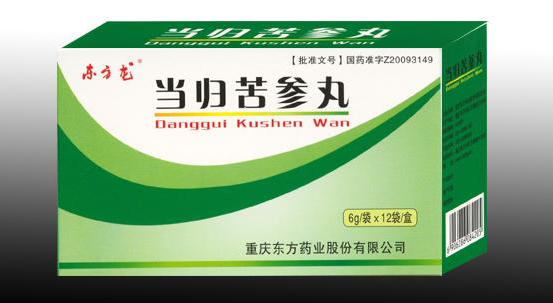
Ingredients: Ku Shen (Sophora), Dang Gui (Angelica), with honey and corn starch as excipients.
Target Population: Used for skin sores, acne, itchy eczema, and rosacea caused by blood dryness and damp-heat.
The efficacy of Dang Gui Ku Shen Wan: Eliminates dampness and cools the blood to treat skin diseases such as eczema caused by damp-heat.
Dosage: Oral administration, one bottle (6 grams) per dose, twice a day.
4. San Jin Pian (Three Gold Tablets)
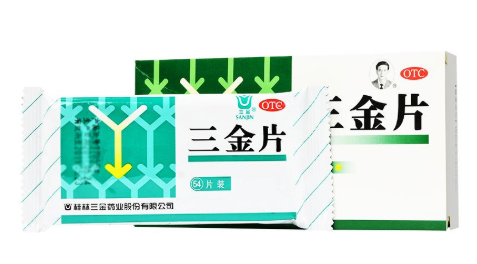
Ingredients: Centella Asiatica, Jin Sha Teng (Desmodium), Yang Kai Kou (Shepherd’s Purse), Ba Zhu (Dandelion), and Jin Ying Zi (Cherokee Rose).
Target Population: Can be used for urinary tract infections with difficulty urinating, as well as chronic prostatitis.
The efficacy of San Jin Pian: Clears heat, eliminates dampness, and promotes urination, treating difficulty urinating due to damp-heat accumulation in the lower jiao.
Applicable Symptoms: Heat lin, short and red urination, painful urination, urgency and frequency; acute and chronic pyelonephritis, cystitis, urinary tract infections with the above symptoms; chronic non-bacterial prostatitis with kidney deficiency and damp-heat accumulation.
In the formula, Ba Zhu eliminates wind-dampness, promotes urination, and reduces swelling and pain; Yang Kai Kou clears heat and promotes diuresis as the chief herb; Centella Asiatica and Jin Sha Teng clear heat and eliminate dampness as the deputy herbs; Jin Ying Zi secures essence and astringes the intestines as the assistant. The entire formula works together to promote diuresis, clear heat, and detoxify.
Dosage: Oral administration, (1) for chronic non-bacterial prostatitis: 3 tablets per dose, 3 times a day, for a course of 4 weeks. (2) For other indications: 3 tablets per dose, 3-4 times a day.
Adverse Reactions: Occasionally, mild elevations in serum alanine aminotransferase (ALT), serum aspartate aminotransferase (AST), mild increases in blood urea nitrogen (BUN), and mild decreases in white blood cells (WBC) have been observed.
5. Compound Huang Lian Su Pian (Compound Berberine Tablets)
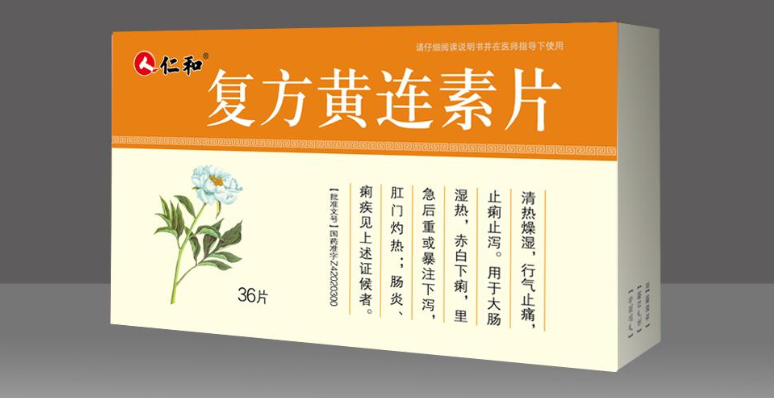
Ingredients: Berberine Hydrochloride, Mu Xiang, Wu Zhu Yu (Evodia), Bai Shao (White Peony).
Target Population: Patients with severe damp-heat in the large intestine, diarrhea, and abdominal pain but with constipation.
The efficacy of Compound Huang Lian Su Pian: Eliminates dampness and treats constipation and urgency due to severe damp-heat in the gastrointestinal tract.
Dosage: Oral administration, 4 tablets per dose, 3 times a day.
In the formula, Berberine Hydrochloride is the main drug, effective for treating dysentery, supplemented by Mu Xiang and Bai Shao to promote qi and relieve pain, alleviating abdominal distension and urgency; Wu Zhu Yu warms the middle and disperses cold, counteracting the bitter cold of Huang Lian. The combination of these herbs has the effect of clearing intestinal heat, promoting qi, relieving urgency, and alleviating pain and diarrhea.
6. Wu Ling San (Five-Ingredient Powder)
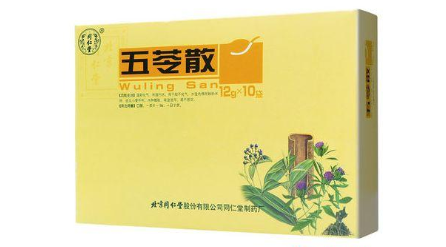
Ingredients: Gui Zhi (Cinnamon Twig), Ze Xie (Alisma), Bai Zhu (Atractylodes), Fu Ling (Poria), and Zhu Ling (Polyporus).
Target Population: Patients with significant dampness, edema, and difficulty in expelling water from the body.
The efficacy of Wu Ling San: Promotes urination and eliminates dampness. Treats edema caused by internal dampness.
Main Indications: Water retention due to bladder dysfunction. Difficulty urinating, mild headache, slight fever, thirst, and desire to drink; severe cases may result in vomiting water; or palpitations below the navel, vomiting foamy saliva, and dizziness; or shortness of breath and cough; or edema and diarrhea. The tongue coating is white, and the pulse is floating or rapid.
Although this formula addresses many symptoms, the underlying mechanism is due to internal water-dampness and bladder dysfunction. In the “Shang Han Lun” (Treatise on Cold Damage), it is primarily used for water retention caused by unresolved exterior pathogens, which leads to bladder dysfunction. The unresolved exterior pathogen causes mild headache and slight fever; bladder dysfunction leads to difficulty urinating; water retention obstructs yang qi, preventing fluids from ascending to the mouth, resulting in thirst; if there is pre-existing water retention in the lower jiao, ingested water cannot be distributed and may cause vomiting, hence referred to as “water reversal syndrome”; if water-dampness overflows to the skin, it results in edema; if water-dampness descends to the large intestine, it leads to diarrhea; if water-dampness obstructs the stomach, it causes vomiting and diarrhea; if water-dampness accumulates in the lower jiao, it causes palpitations; if water-dampness ascends, obstructing clear yang, it leads to vomiting foamy saliva and dizziness; if water-dampness obstructs the lungs, it causes shortness of breath and cough. The treatment should primarily focus on promoting urination and eliminating dampness, while also warming yang and transforming qi. The formula emphasizes Ze Xie as the chief herb, as it is sweet and bland, directly reaching the kidneys and bladder to promote urination and eliminate dampness. The deputy herbs, Fu Ling and Zhu Ling, enhance the diuretic effect. Bai Zhu and Fu Ling strengthen the spleen to facilitate the transformation of water-dampness. The “Suwen: Ling Lan Mi Dian Lun” states: “The bladder is the official of the capital, where fluids are stored; when qi transforms, they can be released.” The bladder’s transformation relies on the warming of yang qi, hence the formula also includes Gui Zhi to warm yang and transform qi to assist in diuresis, and to dispel exterior pathogens.
7. Xiao Huo Luo Wan (Small Activating Collaterals Pill)
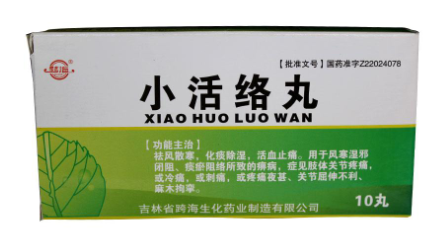
Ingredients: Di Long (Earthworm), Mo Yao (Myrrh), Zhi Chuan Wu (Processed Aconite), Ru Xiang (Frankincense), Zhi Cao Wu (Processed Aconite), and Dan Nan Xing (Arisaema).
Target Population: Individuals with severe dampness in the body, who also have wind evil entering the body, causing joint pain, cold limbs, and stiffness in the joints.
The efficacy of Xiao Huo Luo Wan: Activates blood, relieves pain, eliminates dampness, dispels wind, scatters cold, and transforms phlegm. Treats wind-damp diseases caused by wind-damp evil.
Dosage: Take with yellow wine or warm water. One pill per dose, twice a day.
In the formula, Zhi Cao Wu and Zhi Chuan Wu are warm and dry, specifically for dispelling wind and eliminating dampness, relieving cold and pain as the main herbs; Dan Nan Xing dries dampness and transforms phlegm to eliminate phlegm-dampness in the collaterals, also having pain-relieving effects; combined with Ru Xiang, Mo Yao, and Di Long to promote qi, invigorate blood, open the collaterals, and relieve pain. The combination of these herbs works together to dispel wind, eliminate dampness, and activate the collaterals to relieve pain.
Conclusion: The seven TCM medicines for eliminating dampness introduced above are all very effective. However, the premise is to treat according to the symptoms; without this important foundation, no medicine will be effective and may even cause side effects. Patients who are unsure should consult professionals before making a choice.
Recommended Reading:
| 8 Classic TCM Medicines for Strengthening the Spleen and Stomach, Warming the Middle and Dispelling Cold |
| Six Major TCM Medicines for Spleen Deficiency that Accelerate Aging |
| 10 Famous TCM Medicines for Treating Diabetes |
| A Timeless Sacred Medicine to Eat in Autumn, Strengthening the Spleen and Kidney |
| One Disease, One Medicine: 30 Commonly Used TCM Medicines for Various Diseases |
1. The information in this article is sourced from the internet and is collected for learning and research purposes. If there is any copyright infringement, please send a message to inform us, and we will address it within 3 working days. 2. All folk remedies, traditional prescriptions, ancient formulas, and treatment plans mentioned in this article are for research purposes only and do not constitute any medical advice. Please do not blindly follow them. We do not bear any responsibility for any consequences arising from this.
